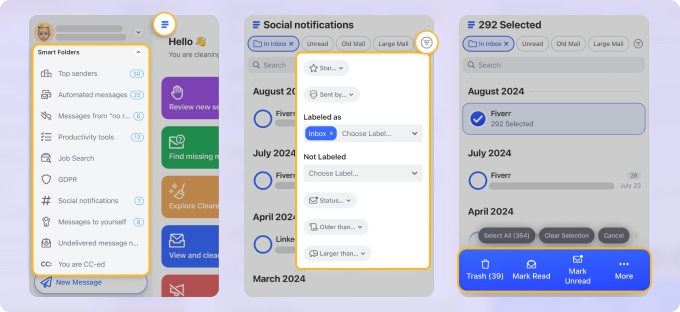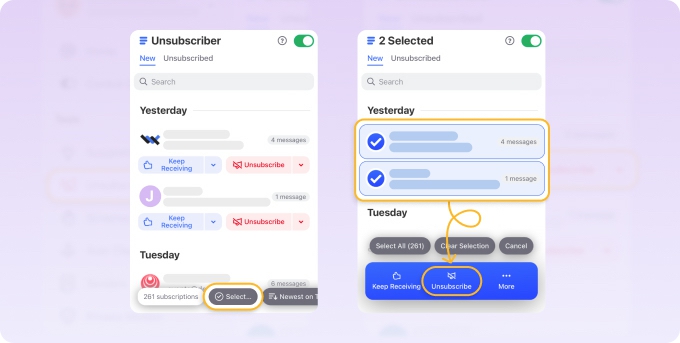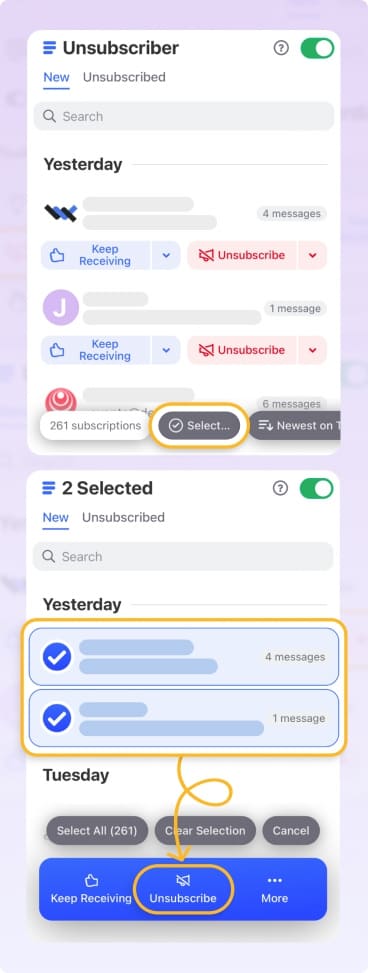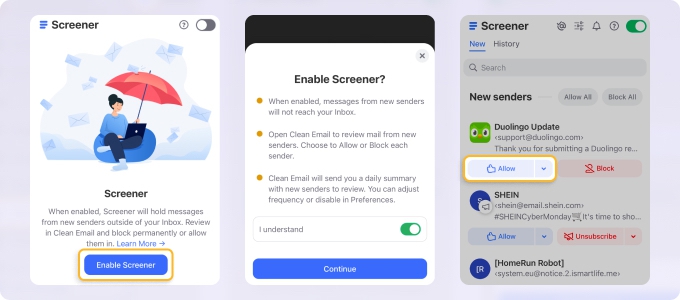Currently SMTP Settings
Without initially customizing your Currently.com settings, you will be unable to utilize the outgoing mail services effectively. To use desktop mail software to access your Currently.com account, you will need the following SMTP settings:
| Option | Description |
|---|---|
| SMTP Host: |
|
| SMTP Port: |
|
| SMTP Username: | Your full email address (name@domain.com) |
| SMTP Password: | Your secure mail key (for some mail programs, you can use your mail account password as well) |
Currently.com Email Server Settings For Receiving Emails
You should note the following settings for mail receiving:
Currently POP Settings
| Option | Description |
|---|---|
| POP3 Host: | inbound.att.net |
| POP3 Port: | 995 |
| Requires SSL: | Yes |
| POP3 Username: | Your full email address (name@domain.com) |
| POP3 Password: | Your secure mail key (for some mail programs, you can use your mail account password as well) |
Currently IMAP Settings
| Option | Description |
|---|---|
| IMAP Host: | imap.mail.att.net |
| IMAP Port: | 993 |
| Requires SSL: | Yes |
| IMAP Username: | Your full email address (name@domain.com) |
| IMAP Password: | Your secure mail key (for some mail programs, you can use your mail account password as well) |
Currently + Clean Email = Perfect Inbox Balance
Currently’s sleek, private email setup is already great—but pair it with Clean Email, and your inbox becomes truly effortless. Start with Smart Folders, which group emails into types like “Subscriptions,” “Finance,” or “Social.” It helps you focus on the stuff that matters, while cleaning up the rest quickly.


Using Unsubscriber, you can easily manage every subscription in one place—even the ones without visible unsubscribe links. Just click, unsubscribe, and enjoy a less cluttered inbox. Clean Email even blocks the sender afterward, just in case.


The Screener feature takes it a step further by filtering out emails from new or unknown senders before they hit your inbox. You decide who gets in, and who gets ignored—simple and effective.


Want to make email cleanup even faster? Enable Cleaning Suggestions, and Clean Email will offer personalized recommendations based on your behavior. You don’t even have to think about what to delete—it tells you.
Additional Notes to Remember
AT&T users of Currently.com email run a free mail service provided by Currently.com and may access up to 1Tb of storage.
You must use a web browser and navigate to the following address to access your currently.com email: https://currently.att.yahoo.com
💡 Note: In this guide, you will discover what secure mail keys are and why you'll want them to access your Currently email from a desktop application or email client without using Open Authentication (OAuth).
Looking for Roadrunner email settings or Spectrum settings? Our Blog's Email Settings category contains specs for all major mail service providers.
POP3 vs. IMAP: What's The Difference
Two alternative methods for configuring a mail address in a client application are IMAP and POP3.
With IMAP or Internet Message Access Protocol, you may use any device to access your emails from anywhere. When utilizing IMAP, you read a message from the email provider rather than downloading or saving it on your computer. Consequently, you may access your emails from various devices and locations throughout the globe, including your phone, a laptop, and a friend's PC.
IMAP does not automatically download attachments; instead, it waits until you click on a message to download it. You can check your emails much faster this way than you can use POP.
The most used protocol for receiving email over the internet is Post Office Protocol 3, or POP3. This standard protocol gets used to transmit emails from a distant server to a local client and is supported by most email servers and clients. With POP3, email is received and stored on the email server in one-way client-server communication. The POP protocol's third iteration is indicated by the "3" in its name.
Users may check their email without a mail program since POP3 integrates into common internet browsers like Internet Explorer and Mozilla Thunderbird.
The two are different because IMAP saves messages on the server rather than a local device like a PC, even though they let you connect to the mail server and read your emails via a client program. On the other hand, POP3 mail will make an effort to connect and store messages locally, whether on your PC or a mobile device. POP3 transfers email from a server to one machine before erasing it from the server. IMAP, on the other hand, synchronizes the message across many devices and saves it on a server.
As a result, IMAP is still the preferred email protocol for most users.
Please let us know, and we’ll fix them immediately.